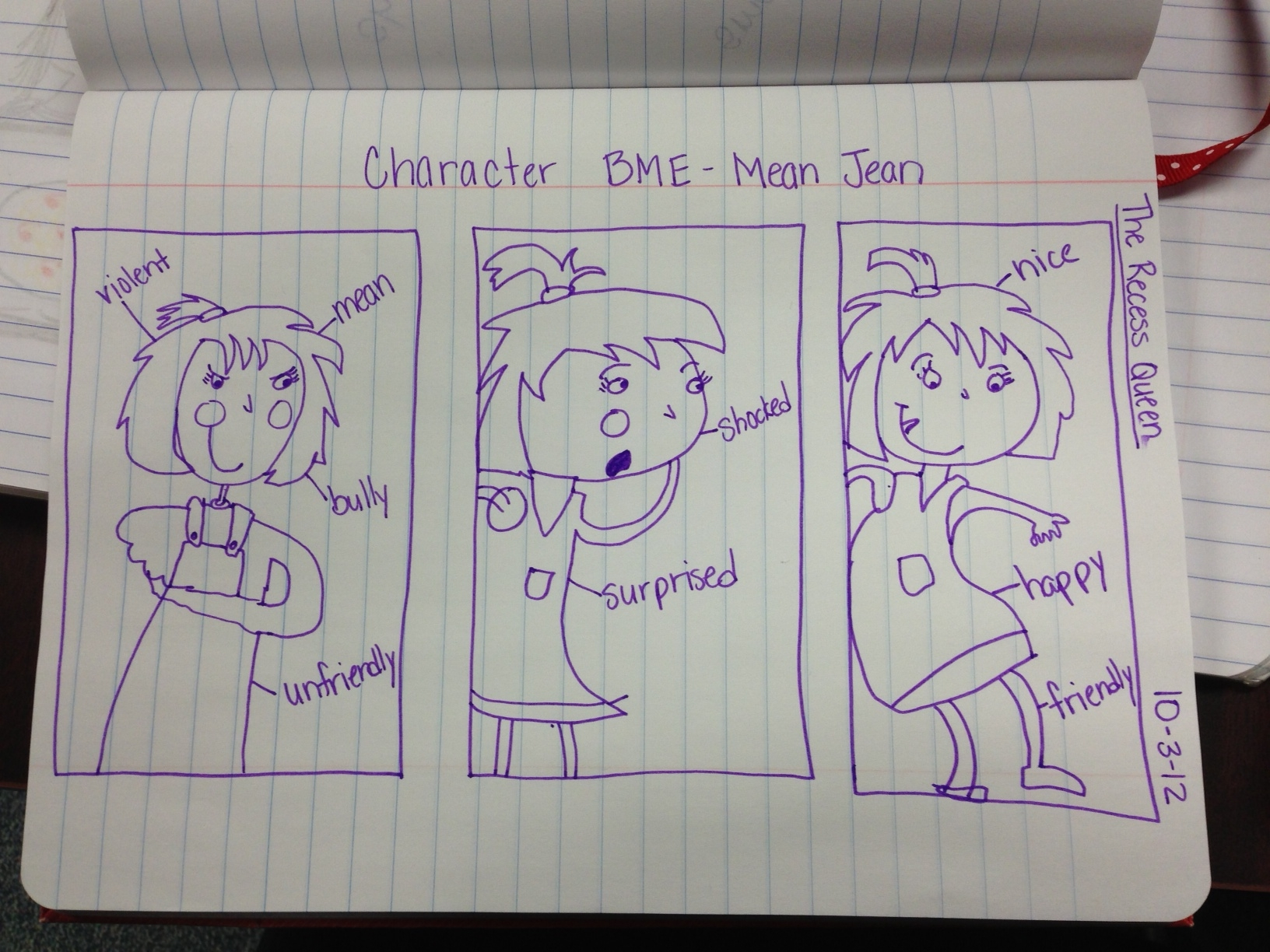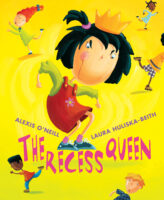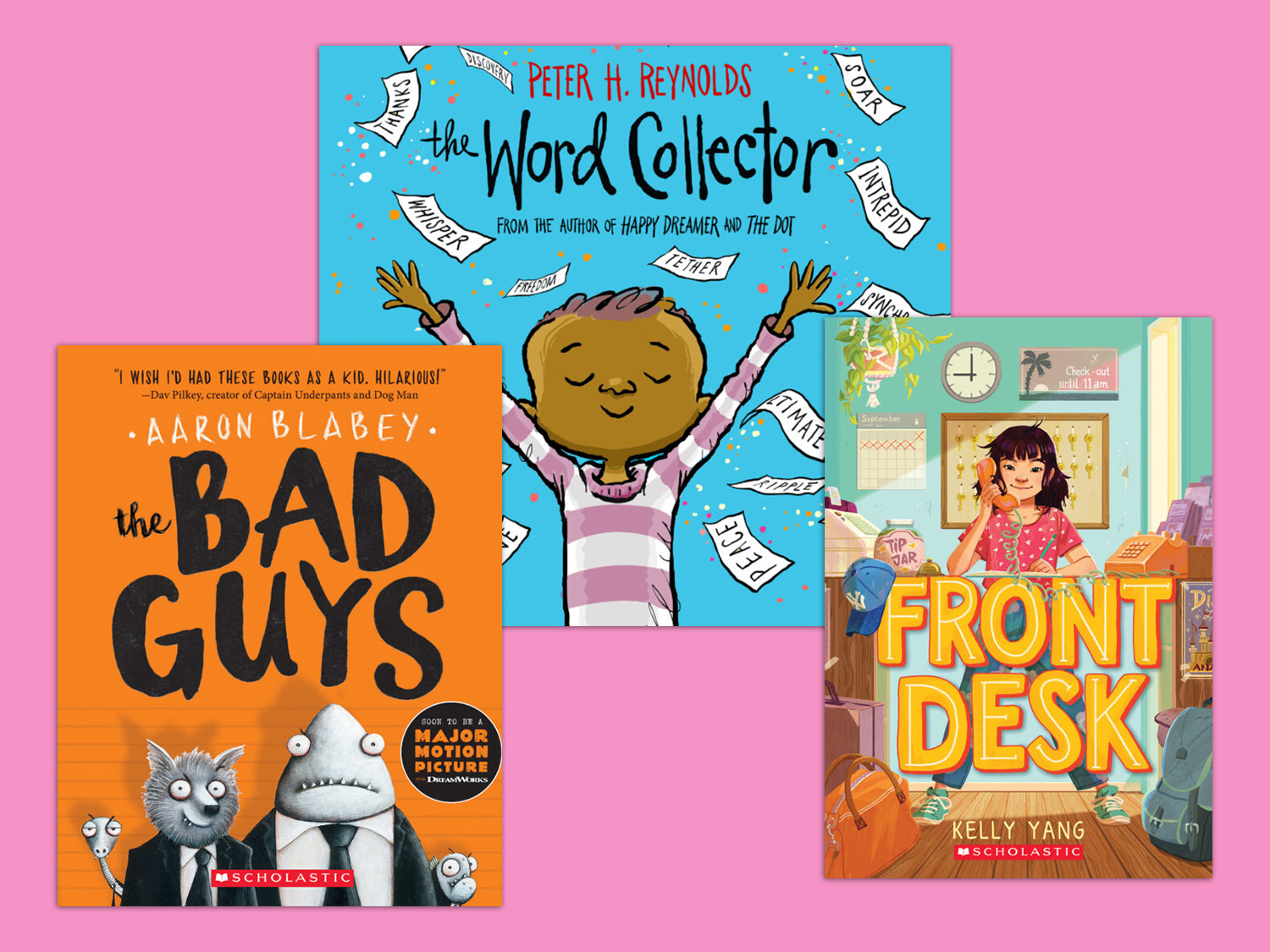How to Teach Students Character Mapping and Analysis
Take a closer look at characters with these exercises and activities.
A reader’s notebook is a great tool for prompting students to transition from thinking about what they read to talking, drawing, and writing about it. Students can use their notebooks in a variety of ways to explore character traits and how characters change over time.
Below, elementary teacher Julie Ballew shares four ways students can analyze characters with increasing complexity as they grow their understanding of character traits and develop their skills as writers.
Character Maps for Young Readers
Even the youngest students can use character maps to demonstrate their reading comprehension. The simplest character maps feature a drawing of the character in the middle and some character traits and/or feelings in a web around them.
Read a picture book aloud with your class and then model how students should complete a character map before they start drawing in their own notebooks. Here are read-aloud classroom favorites.
Characters Change Over Time
Once students are comfortable with describing characters and naming their traits, it is important to teach them that characters are not just one way permanently, but rather change over time. In their notebooks, students should divide a page into three sections and create three small character maps that represent the main character at the beginning, middle, and end of the story.
For example, the character Jean in The Recess Queen begins the story as a mean, unfriendly bully, but when she meets the new girl in school, she is surprised and shocked by Katie Sue’s kindness, and Jean ends the story as a nice, friendly kid who plays well with others.
Increasing Complexity
As students get older and become more proficient readers, character maps can grow with them. Beginning in second grade, you should push for students to include text evidence in their analysis. One way students can do this is to write the inferred traits of the main character along with examples from the book (just a few words is fine) to support their analysis. Another way students can give evidence is by drawing a simple character map and writing a few sentences below it to explain their thinking.
Character Analysis for Older Readers
More advanced readers should be able to focus on the evidence behind the traits they name. Their writing should be longer and can include direct quotes from the text. The structure of the analysis can be as simple as a notebook page divided into two columns — a narrow column on the left naming each character trait, and a wider column on the right where students copy relevant quotes from the book or provide other evidence that supports the identified traits.
Creating character maps, describing how characters change over time, and analyzing character traits are important steps in improving reading comprehension.
As Ballew explains it: “When we invite students to take a closer look at characters, we are inviting them to do more than just read the words on the page; we are asking them to do some heavy thinking work. Reader’s notebooks help that thinking come to life so that we can see their level of understanding, assess their needs, and move forward.”
Shop books with memorable characters below! You can find all books and activities at The Teacher Store.
In this sassy playground romp the irrepressible new kid dethrones the reigning recess bully by doing the unthinkable—she invites her to be her friend!
Rich with signature rhyming text and unforgettable illustrations, Pig, the greediest pug alive, and his friend, Trevor, will have kids rolling with laughter.
David is a beloved character, whose unabashed good humor, mischievous smile, and laughter-inducing antics underline the love parents have for their children—even when they misbehave.
Brimming with warmth and color, Princess Truly's rhythmic rhyming adventures are a celebration of individuality, girl power, and diversity.
Gerald the giraffe longs to dance, but his legs are too skinny and his neck is too long. His knees buckle whenever he tries to twirl.
Ikarus Jackson, the new boy in school, is outcast because he has wings, but his resilient spirit inspires one girl to speak up for him.
Camilla Cream is very worried about what other people think about her, but at the very moment she most wants to fit in, she becomes completely covered in colorful stripes!
A fictionalized story about the life of young Booker T. Washington.
A stirring, dramatic story of a slave who mails himself to freedom by a Jane Addams Peace Award-winning author and a Coretta Scott King Award-winning artist.













